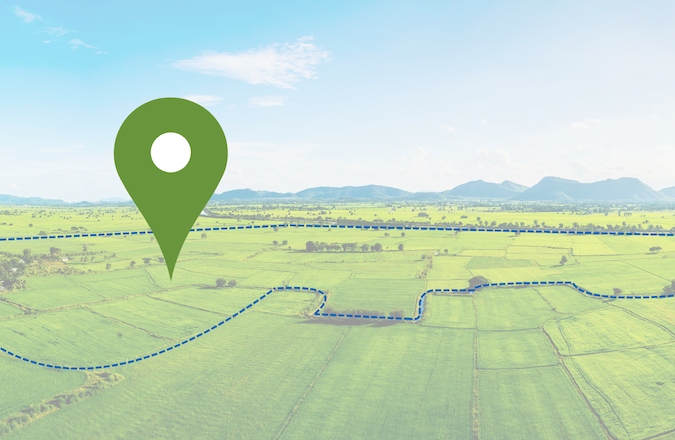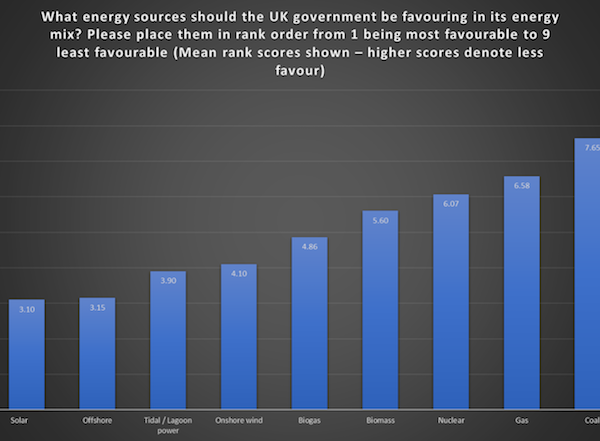National Policy Statement (NPS) EN-3 provides comprehensive guidance to assist developers when pursuing Nationally Significant Infrastructure Projects (NSIPs) for renewable energy. To be classed as nationally significant a solar application must have a generating capacity of at least 100MW. Even with parameters laid out by the government, planning constraints are met along the way. This article provides an overview of the core considerations during site selection and project scoping in the current UK solar market.
Site Selection for Solar Farms
A solar farm of 100MW capacity will cover approximately 400 acres of land [1]. The core considerations during site selection are technical and financial viability, and sustainability.
Solar farms are predominantly located on agricultural land. Like crops, solar farms require sunlight to produce energy, and this makes the relatively flat, open fields of existing farmland a fitting landscape. Policy directs ground-mounted solar farms to areas of previously developed or lower grade agricultural land, where such opportunities exist, but it also recognises that land type should not be an overriding factor governing site suitability [2]. This is particularly relevant as areas of poorer quality land are often constrained for other reasons such as flood risk, terrain difficulties or the land simply being unavailable for development.
In conjunction, land must be within a suitable distance of grid connection points. Site selection should aim to keep the development in proximity, thereby reducing environmental disruption caused by grid connection works. The selection process is limited to a radius of 2km for 132kV and 5km for 33kV connection lines [3]. By this measure, grid connection is an increasingly scarce resource and the challenge of putting together applications with lowest cost and highest output is front and centre. Significant grid infrastructure is required to make areas of land in the UK, which are currently not viable for utility scale solar development, more accessible. This type of infrastructure development comes with its own planning constraints, and this has a knock-on effect for the timeline of solar applications.
Image produced in Canva by the author.
Environmental Impact and Reductions to Panel Layout
Once a potential site has been identified, the developer must systematically consider all potential environmental effects throughout a given project, from site construction and operation, right through to maintenance and decommissioning. Developers will generally seek to identify constraints early on during the planning process to help minimise harm to the environment and take on feedback provided by stakeholders. The detailed planning process can also help to avoid costly mitigation or a reduction in output during operation.
During project scoping and Environmental Impact Assessment (EIA), the developer must set out and assess the parameters for topics including but not limited to:
- climate change,
- cultural heritage,
- ecology and biodiversity,
- agriculture and soils,
- landscape and visual effects,
- traffic and access,
- telecommunications and utilities,
- glint and glare,
- and air quality.
Desk-based assessments and surveys are undertaken in each area to provide detail of the potential impacts. Unfortunately, in some cases, the results or responses to environmental assessment will identify a need for reductions to a specific panel area or site boundary. A well-publicised example of this occurring in practice is West Burton 3, a site area within the wider West Burton Solar Project, needing to be reduced due to a scheduled monument area being identified along the north boundary [4]. Through a series of consultations with the relevant stakeholders, West Burton Solar was able to gain consent from the Secretary of State for the Department of Energy Security and Net Zero (DESNZ) on 24 January 2025.
It should be noted that not all environmental constraints will lead to the need for removal of panel areas and other types of mitigation can be employed. For example, in the context of glint and glare, the first port of call in response to significant effects being identified is to explore screening options. In other scenarios, adjusting panel direction and tilt can resolve glare issues but may also impact site capacity.
Pager Power
Pager Power has developed proprietary software for evaluating all aspects of glint and glare from a solar development, including areas causing significant impacts and calculating the level of screening required to adequately mitigate these effects. If you would like advice for a project, or are interested in more information, please do not hesitate to get in touch.
References:
[1] https://solarenergyuk.org/news/solar-industry-welcomes-english-planning-reforms/
[2] Rankl, F. (July 2023). Planning and solar farms, Commons Library Debate Pack, Accessed on: 14/04/2025
[2] National Policy Statement for Renewable Energy Infrastructure (EN-3). (November 2023). Department for Energy Security & Net Zero, Accessed on: 14/04/2025
[3] Solar Energy UK. (June 2024). Factsheet: Site Selection, Accessed on: 14/04/2025
[4] West Burton Solar Project. (November 2022). Updated proposals for West Burton 3: Information change note in support of consultation, Accessed on: 14/04/2025




